Best Things To Do in the Azores for Adventures and Relaxation
This website uses affiliate links which may earn a commission at no additional cost to you. As an Amazon Associate I earn from qualifying purchases.
Updated: 21st September 2023
Near halfway between Europe and Canada, a cluster of tussled, rugged, lush, and windswept isles form Portugal’s far-flung Eden-like archipelago – the Azores. Piercing the Atlantic Ocean, these nine lush yet volcanic specks show off some of Mother Nature’s finest work, and the best things to do in the Azores are as adrenaline-pumping as they are effortlessly soothing.
Long a port of call for those sailing – and smuggling – between the two continents, the archipelago has been scripting seafaring stories for centuries. More recently, however, the isles have become an in-the-know sanctuary from the modern world – something I can testify to since I made Portugal my home.
This is a world where whales and dolphins dance in uninterrupted waters, geysers and geothermal activity tease from the underworld, hot springs alleviate, hydrangea-lined trails lure, and epic hikes to lofty peaks elate. Panoramic from all angles, patchworks of pastures spill down mountainsides towards the ocean, occasionally interrupted by charcoal-hued vineyards, basalt stone churches, and whitewashed rural villages. The Azores don’t warrant any Hawaii comparisons; they more than stand on their own nine feet.

So whether you want to walk through lava tubes, ascend Portugal’s loftiest peak, or recharge in an eco-resort after surfing the Atlantic’s snarling swell, these top ten things to do in the Azores will leave you under the archipelago’s spell.
100% yes. The Azores’ rugged and mystical charm, incredible natural attractions – such as volcanic craters and geothermal activity – and the chance to spot dolphins and whales are just the tip of the iceberg. Thanks to the island’s remote location, they have remained pristine, and the Azores are not only the perfect adventure destination but also ideal as a get-away-from-it-all retreat.
If you only want to visit São Miguel, you could ‘tick off’ the main things to do in the Azores in three days, as the island is compact and easy to get around. I believe that The Azores deserve at least a week so you can ‘switch off’ and appreciate the laid-back landscapes. If you want to hop between all of the islands, then allow at least a fortnight and if you plan to travel between multiple islands, allow spare time in case of delays or cancellation of flights or ferries due to adverse weather.
São Miguel is the best option to experience a bit of everything, especially as it has the most international connections. If you want to effortlessly island hop, pick Pico, Faial and São Jorge as a three-island adventure, as the ferries between them are more regular. Pico has incredible vineyards chiselled from volcanic rock and Portugal’s highest peak, while the more remote islands of Flores (famed for its waterfalls) and tiny Corvo are best for serene rambles far from the crowds.
Sadly, there isn’t a ferry from the mainland to the Azores. Therefore, to get to the Azores, you’ll need to take a domestic flight from Lisbon or Porto (there are no flights from the Algarve) or an international flight from one of the connected cities in Europe and North America (TAP sell direct flights from New York’s JFK). Alternatively, visiting the Azores on a cruise or a yacht charter is possible.
While there are short internal flights between all the islands – the frequency varies depending on their size – the more sustainable tip to travel between the nine isles and complete all the things to do in the Azores is by ferry. Sadly, this isn’t possible on all the routes as the distance between some islands does mean a flight is necessary. The Atlantico line ferries vary by season, with only short local connections in winter, while summer has more routes.
While it is possible to visit the Azores by public transport – I’ve done it twice – you need a little patience due to plenty of long walks, bike rides or waits for sporadic buses. As such, you might want to rent a car to reach the best spots on the island easily. Alternatively, group tours are a good option – especially if you want to do some adventure activities. I like the local operator Futurismo, as they also include whale and dolphin spotting and greatly respect the environment. They offer a fair-priced one-week adventure tour which covers all the highlights.
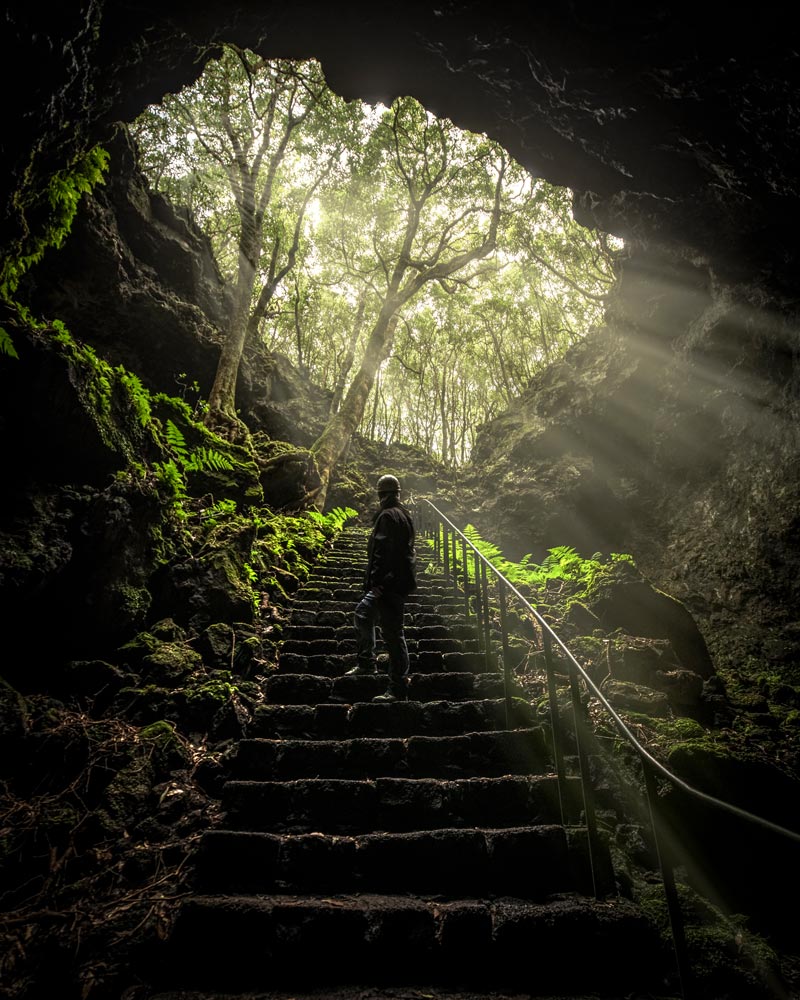
Delve deep underground in lava tubes
While Madeira, Portugal’s second archipelago, might have its unique levada (irrigation channel) walking trails, the Azores can boast of something even more special: lava tubes.
Given these beautiful islands have volcanic origins, it’s unsurprising that many of the best things to do in the Azores were shaped by seismic activity and magma eruptions. But, for me, this is one of the most remarkable volcanic-related experiences across the archipelago.
Thankfully, more than one island has accessible lava tubes, and you can visit this fascinating phenomenon on Pico, São Miguel or Terceira. The longest of the three is the Gruta das Torres on Pico, and although you can’t explore the full depth of the cave, it is my favourite. On São Miguel, you’ll find the Gruta do Carvão on the outskirts of Ponta Delgada, and Terceira’s tubes are called Gruta do Natal.
While you can’t just wander in freely anymore – once you could, keep an eye out for graffiti in some of the tunnels – the experience is still incredible. At Pico’s Gruta das Torres for example, you’ll be given a briefing and quick video overview of the tunnels’ history before being kitted out with a hard hat and being led into the dark depths of the tube. However, only a certain amount is open to the public.
Not only is the experience seriously cool, but it’s also informative. Along the cavity, you can see the markings on the dark walls, which show the scars of the different temperatures and outbursts. By the time you come back into the light, you’ll be more than in awe at the power of nature.
GETTING TO THE AZORES
Many people assume that Ponta Delgada on São Miguel is the only gateway to the Azores. However, TAP Airlines (in conjunction with Azores Airlines) also offer direct flights from the mainland to Terceira, Faial, Pico, Graciosa and Santa Maria, meaning you could start and end your trip on different islands. If you’re travelling from further afield, TAP’s stopover programme, which includes beautiful Lisbon or Porto’s food scene, is worth considering, as it will also give you a 25% discount on all domestic flights.
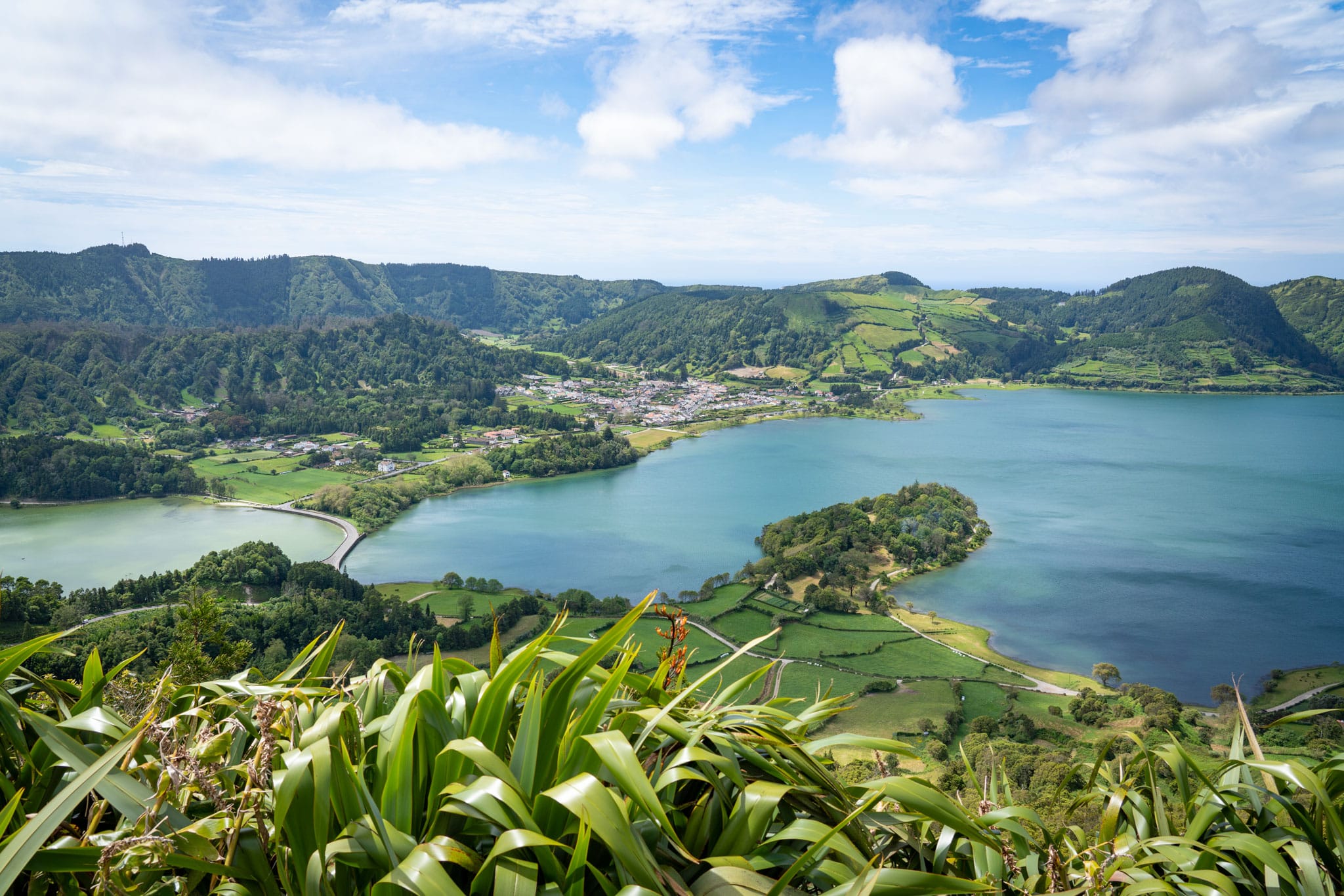
Hike to epic viewpoints
With numerous impressive trails across all the islands, the best free thing to do in the Azores is go hiking. Thankfully, complimentary doesn’t mean missing out here, as the spectacular panoramas are genuinely priceless.
My favourite place for hiking is São Jorge, a long and thin ridge-like island that dramatically spills downwards into the Atlantic Ocean. Azoreans have a specific word for these – fajã – which describes the flat part of the land which meets the ocean, usually formed by lava spill cooling on contact with the water.
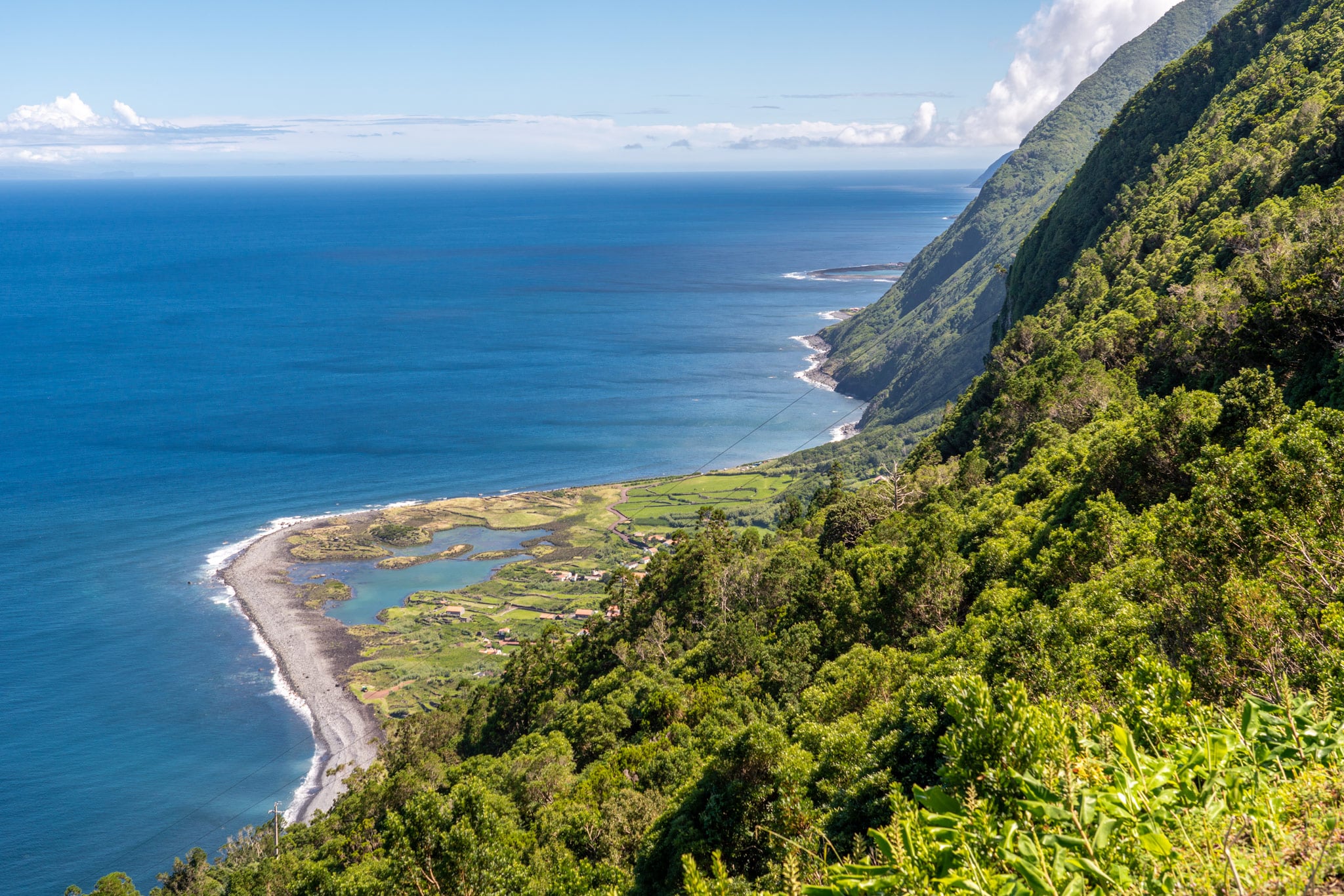
The most famous and impressive of these is the Fajã dos Cubres, which has a lake-like area separated from the ocean by a slight stretch of land. Reachable on the PR1 trail, which starts in Serra do Topo, it’s one of many fantastic routes you’ll find on this lush isle alongside long-distance, multi-day routes.
On São Miguel, the showstoppers are the trails around the Sete Cidades crater lake. Often mistaken for two different lakes due to one being blue and the other green, they are, in fact, the same body of water – the different hues are caused by the light’s refraction. The relatively easy trail to Boca do Inferno is perhaps the best known, but the whole island has plenty of well-marked routes. For a close-up of the lake, allow an hour for some serene kayaking.
If you want the Azores’ outdoor activity with the most alien-like landscape, hike across Capelinhos on Faial Island. While the island’s capital is called Horta, which translates as ‘vegetable garden’ due to its greenery, this side of the island is dark dust, red rock, and decidedly bleaker. Caused by an intense 13-month-long eruption in 1957 – which in turn saw 1000s of Azoreans relocate to the USA – this side of the island was wholly re-shaped and expanded.
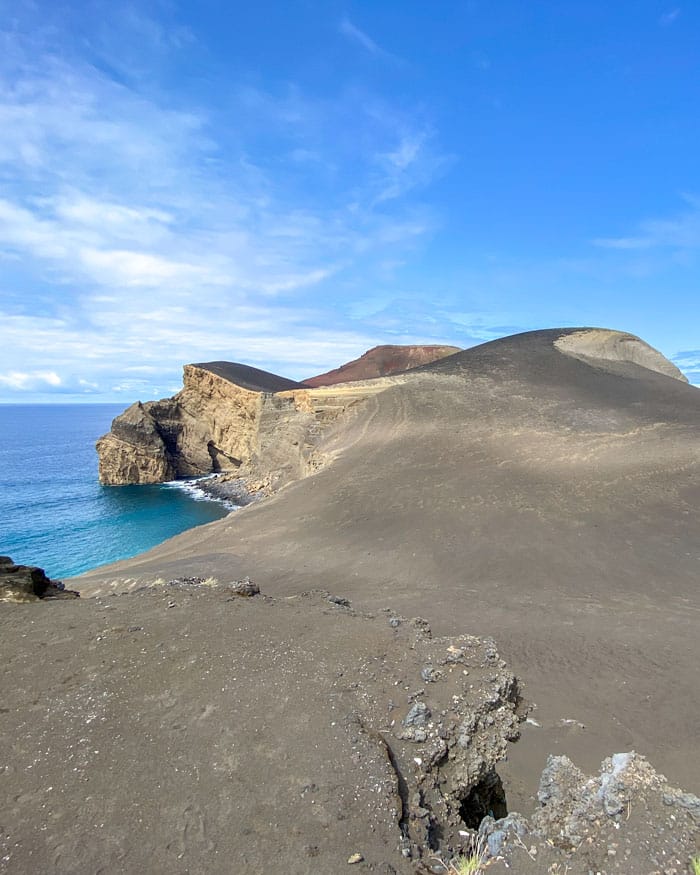
If hiking is one of the things to do in the Azores you’re most keen to do but are travelling solo, fear not, there are many well-traversed and non-dangerous hikes to do. Alternatively, consider booking a group hiking tour.
Whale watching and dolphin spotting
When the navy waters of the Atlantic surround you, there’s no question that you’ll want to include a boat excursion when planning your Azores’ outdoor activities. Luckily, all of the islands offer trips out into the deep blue, as one of the most popular things to do in the Azores is to try to spot marine mammals.
With four resident species – sperm, fin and sei can often be sighted – and plenty of dolphins, you’ll be in good hands on a marine-biologist-led boat tour. Most companies take their responsibility to the environment and wildlife seriously – sustainability is revered in the Azores, both with tourism and in day-to-day life – and companies such as Futurismo also offer responsible wild dolphin swims from Ponta Delgada.
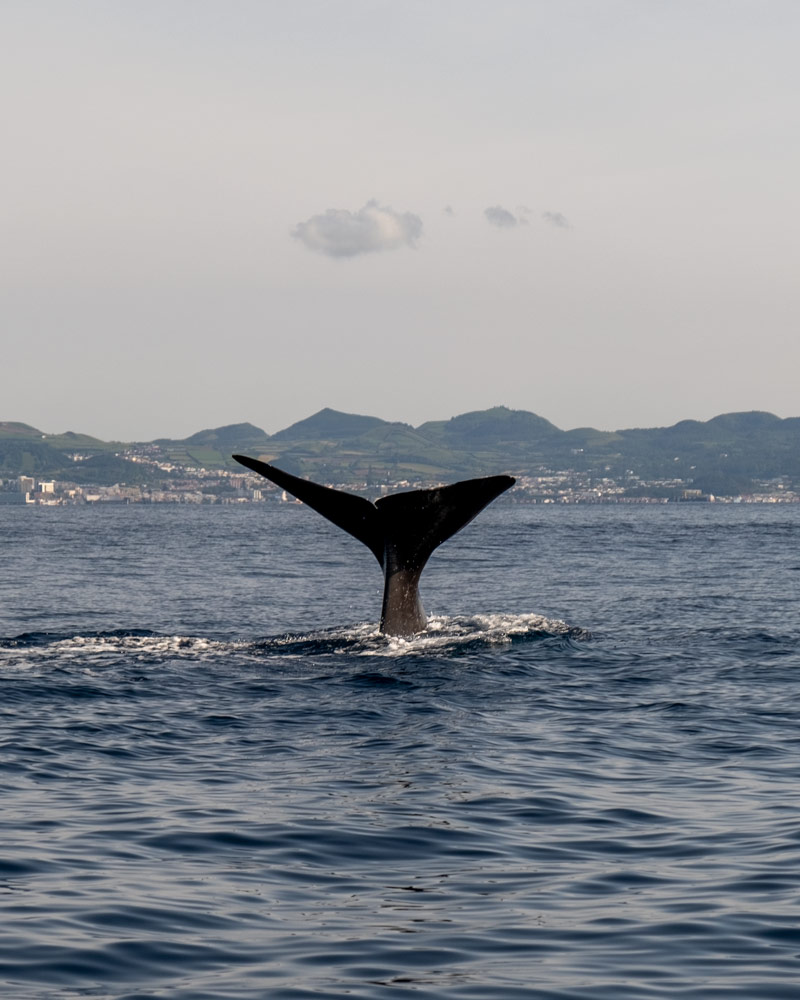
Still, it doesn’t matter which island you’re based on; you’ll be able to find companies offering whale-watching trips across the archipelago, including regular departures from Pico Island, Horta on Faial Island, and on glass-bottom boats from Terceira.
Prime whale-watching season kicks off in Spring, making this one of the best European destinations in April, as you’ll hopefully not be jostling with any cruise ship crowds by this point.
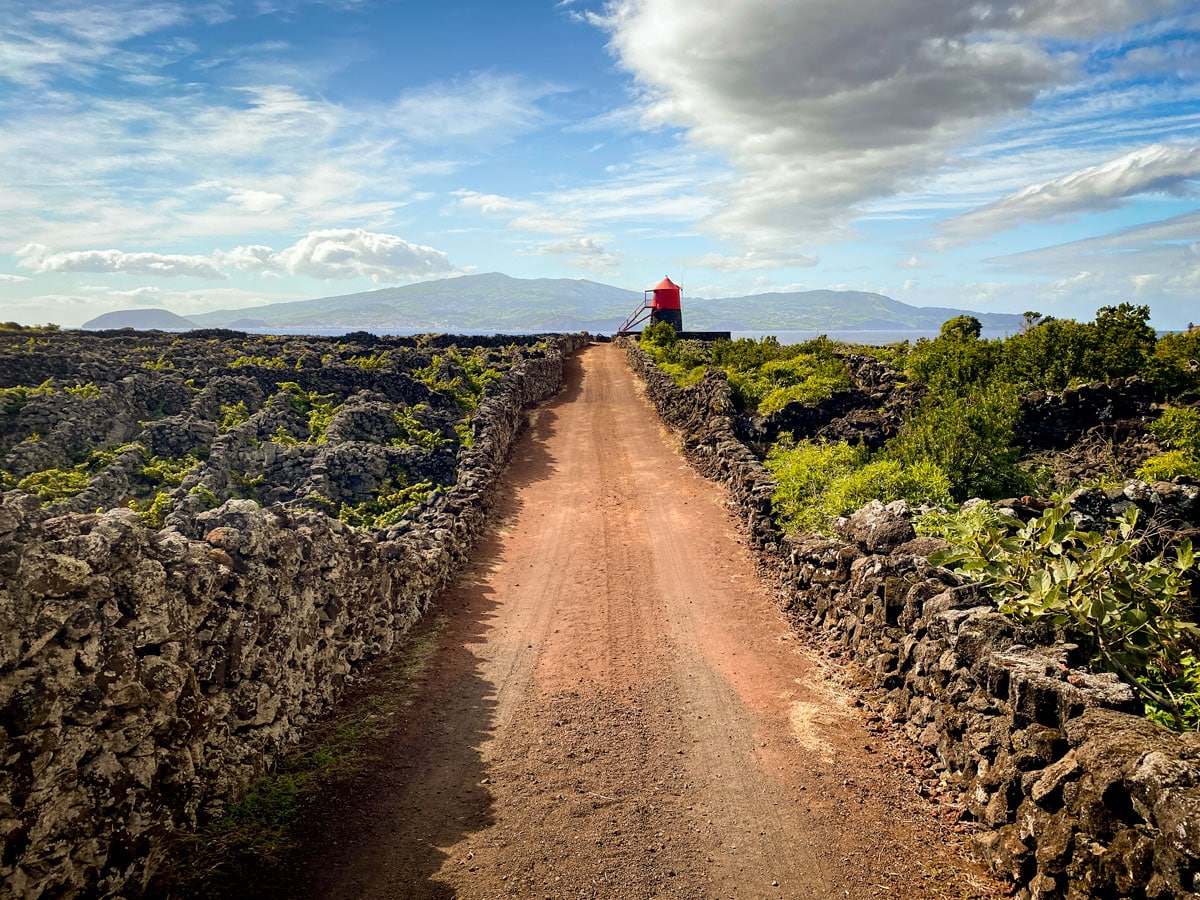
Descend wine terraces to golden sands and discover currais
While sipping wine is certainly not an adventure activity, the art of growing them very much is in the Azores. Not only is this one of the most extreme places to cultivate wine, but it’s also one of the most visually impressive.
One of the most tranquil things to do in the Azores is to explore the vineyards on the island of Pico, which are one of Portugal’s UNESCO sites in their own right. Weathered vines rise from the basalt volcanic rock, telling the back-breaking story of creating viniculture in such an adverse setting.
Growers would have to – and sometimes still do – chisel into the harsh volcanic rock to plant their grapevines, using the hacked-out stone to build the currais (stone-walled areas, sing. curral) which protect the plants from the sometimes fierce Atlantic gales.
Close to Pico’s vineyards, you’ll find a wine museum (Museu do Vinho do Pico), but I’d also suggest a visit to the Wine Interpretation Centre on the other side of the airport. Here, you can enjoy sampling the unique wines while learning the history of the vines. Afterwards, visit the Casa dos Vulcões next door to stand on an earthquake simulator and learn about the volcanic nature of the island, including a breakdown of what makes each one unique.
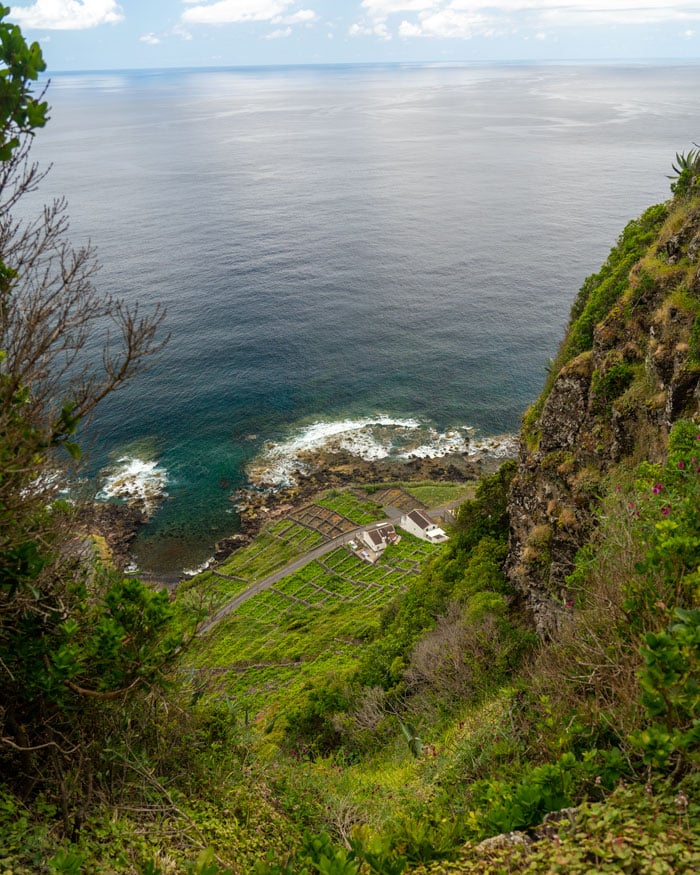
While Pico has the most famous vineyards of the Azores, I also found the terraced vines on Santa Maria island – where you’ll find the Azores’ only golden sand beaches – just as impressive and dramatic. The descent down through the steeply stacked growing area of Maia is not for the faint-hearted, but this corner of the island, complete with a waterfall, is captivating.
Unlike Pico, Santa Maria’s wines are not exported due to legal reasons. Therefore the wines are only fermented for local consumption. So, if you can find a glass of it during your visit, you’ll taste something impossible to find elsewhere.
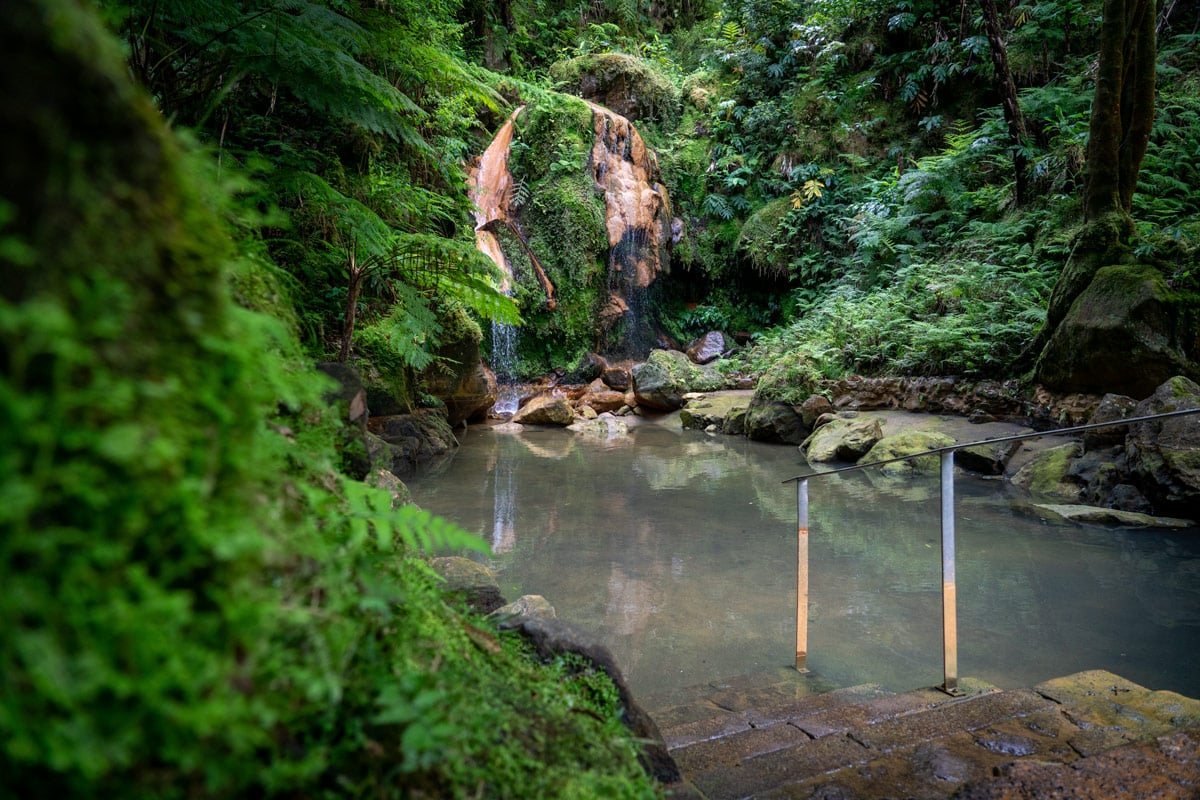
Bathe in the thermal waters
Not all adventures and outdoor activities in the Azores need to get your heart thumping, and sometimes you’ll want to give yourself over to the natural state of flow these islands boast by bathing in the healing waters.
São Miguel island is home to nearly all the Azores’ hot springs and thermal pools, and one of the most popular things to do in the Azores is to visit the Terra Nostra Hot Springs in Furnas. This large, round, and paid-access bathing pool is a murky brown due to the minerals, yet the botanical gardens which envelop it are far prettier.
I prefer the other nearby option at Poça da Dona Beija – which has some manicured landscapes around the handful of pools. Better still are the springs at Centro de Interpretação Ambiental da Caldeira Velha, which are a little further out. Still, you’ll want to arrive early to avoid summer crowds and book in advance if you’d like to stay in one of the popular spa resorts here.
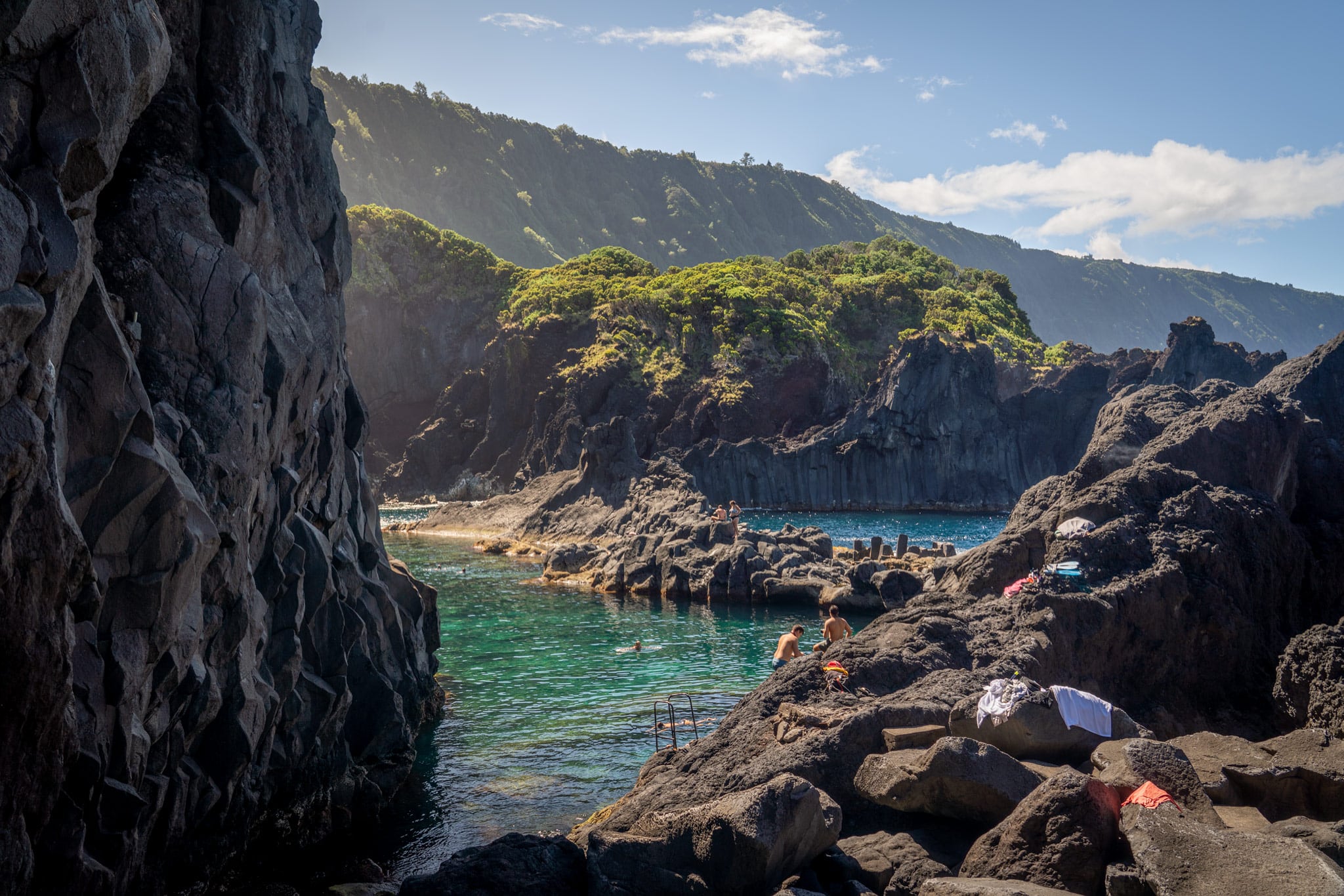
São Miguel also has a thermal pool overlooking the ocean at Termas da Ferraria. Just around the corner from there, you’ll find Ponta da Ferraria, a no-charge bathing location in the ocean itself, warmed by thermal vents below. While other islands have more incredible natural pools – such as the Piscina Natural Simão Dias on São Jorge – they don’t have the thermal springs and hot waters that São Miguel offers.
On Graciosa Island, you’ll find a less attractive hot spring option – it’s more like a traditional pool – at Carapacho.

Snorkel on a protected islet inside an exposed volcanic crater
If you find yourself on São Miguel Island between June and early October, be sure to take the short boat trip from Vila Franca do Campo to Ilhéu de Vila Franca do Campo.
Idyllic and tranquil, this small islet is a protected nature reserve and one of the world’s most unique swimming and snorkelling spots. The island’s circular ‘swimming pool’ is actually the crater of a submerged volcano, and while the beach is compact, the calm waters and epic location make this a place not to miss.
Fair warning, this is one of the most popular things to do in the Azores during summer. With visitor numbers capped at around 400 people daily, you should absolutely book your tickets in advance.
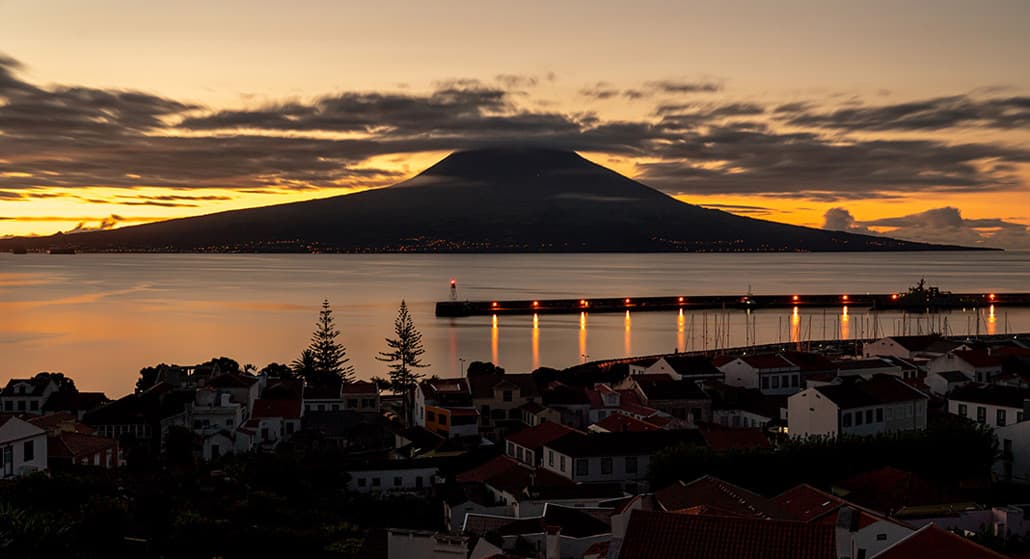
Summit Portugal’s highest peak
While Torre in the Serra da Estrela claims the title of mainland Portugal’s loftiest point, the country’s actual highest pinnacle is on the island of Pico.
Towering up to the heavens and often piercing the clouds, Mount Pico – which literally translates to peak and gives the island its name – offers one of the Azores’ best adventure activities.
From afar, it might seem like more of a steep hike than a climb due to the lower slopes’ less intense ascent, but once you start heading up, you’ll quickly realise that it’s a slog due to the challenging terrain. Still, once you’ve reached the top (2,351 metres) and taken in the far-reaching vistas, you’ll likely agree it’s one of the ultimate things to do in the Azores.
New restrictions have come into force in 2023 to protect the fragile landscape, and a guide is highly recommended, especially on a night hike. As the weather can change quickly in the Azores, you should always check in at the hiking centre beforehand or register your plan to hike without a guide on the new online portal before heading up.
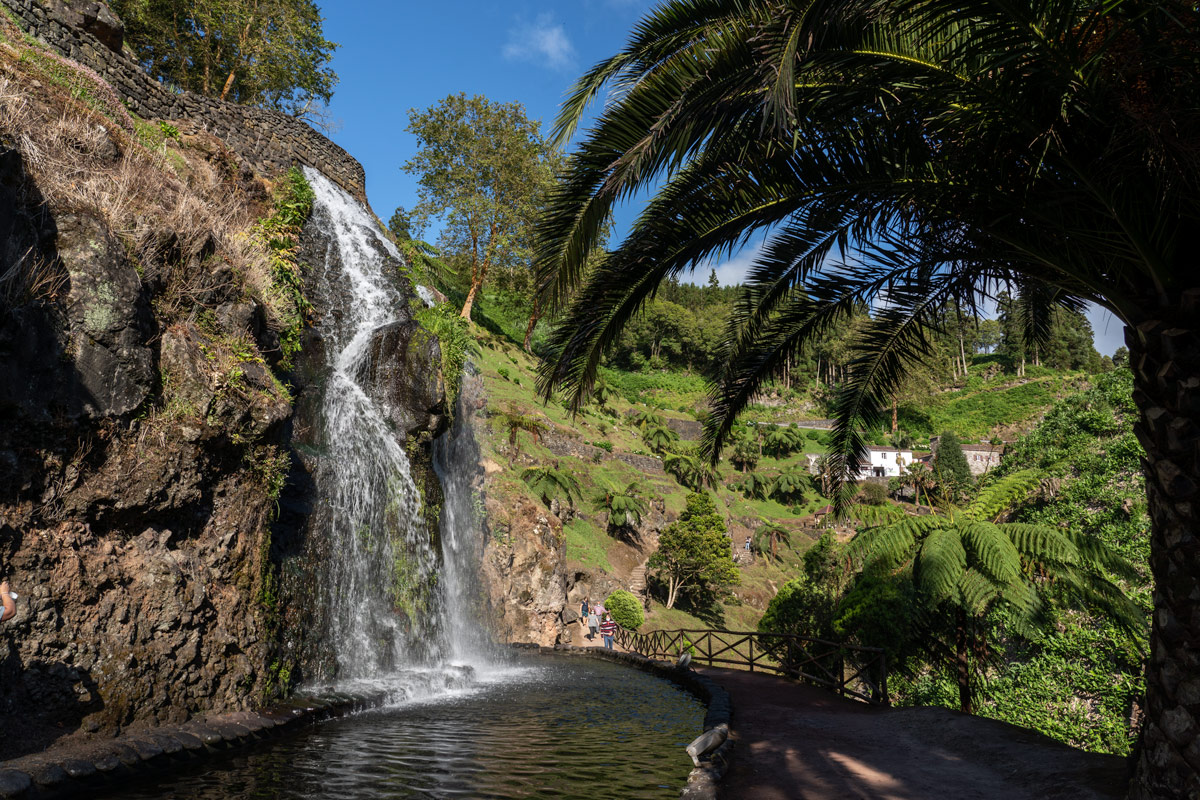
Marvel at majestic waterfalls (while canyoning)
One of the most extraordinary outdoor adventures in the Azores is chasing, swimming in and canyoning around the waterfalls. From small scenic tumbles to vertical falls, you’re spoilt for choice when it comes to cascades.
Flores Island – which translates to flowers – should be called Cascata Island, as this true hidden gem in Europe is the best destination for waterfalls. There are numerous cascades littered across the dense vegetation of the island, with Poço Ribeira do Ferreiro and Poço Ribeira do Ferreiro and perhaps the most impressive.
Seek out Cascata do Aveiro in Santa Maria, while São Jorge’s Cascata do Cruzal is a more tame affair. São Miguel also shines in waterfalls, with various impressive tumbles to be found.
For those who want to embrace these fast-running waters, one of the best things to do in the Azores is to go canyoning. You can do this on Flores Island or in Ribeira dos Caldeirões Natural Park on São Miguel, where the rappel adventures are fairly priced, open to all levels, and can be booked in advance.
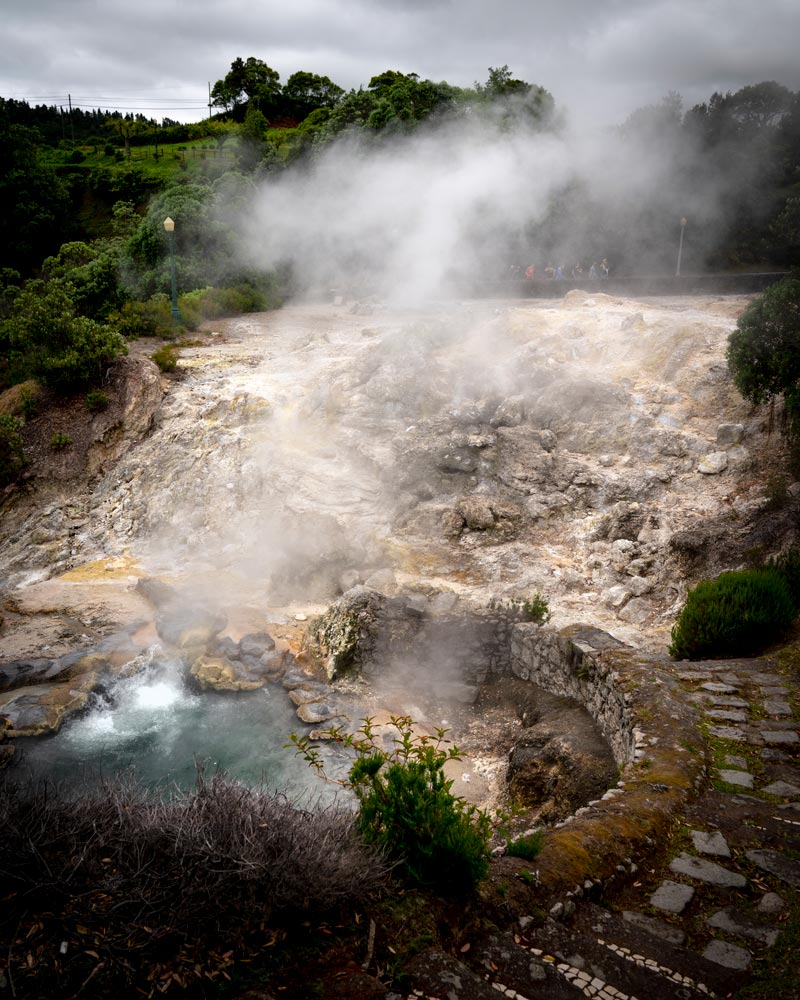
Embrace the geothermal activity
No trip to São Miguel would be complete without visiting Furnas, the fiery heart of the island. As well as the previously mentioned thermal springs, there are plenty more chances to embrace geothermal activity.
In the town itself, you’ll find smoke billowing and geysers bubbling in the open-to-all public areas. Then, settle into one of the local restaurants and order Cozido das Furnas. This typical dish is a mixture of meat and some vegetables, but what makes it special is the cooking method as it’s placed underground and cooked by volcanic activity, similar to a hāngī in New Zealand.
Another place you can visit – although there is a small entrance charge – is the Antigo Pomar das Caldeiras, where boardwalks pass atop the hive of geothermal activity bubbling below. While it’s a bit out of the way and more artificial due to the wooden walkways, the lakeside setting and hive of action make it more impressive than the spots in town.
If you’re based in Ponta Delgada, you might find it easier to book a day tour – which also includes a stop at the island’s beautiful tea plantations – to experience it all.
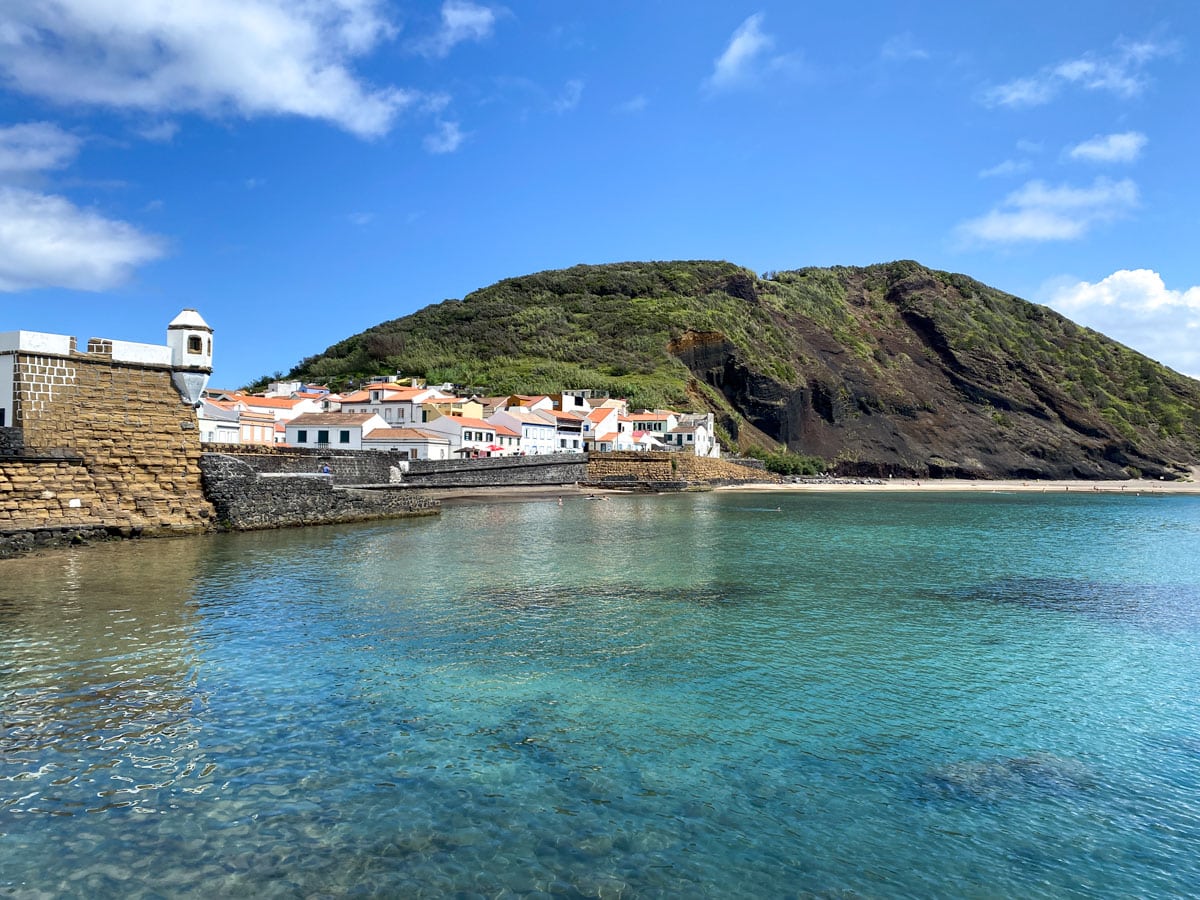
Surf or sunbathe
You can’t talk about all the things to do in the Azores without mentioning the beaches; these are islands, after all. No matter what kind of beach day you’re craving, you’ll surely find the perfect slice of sand along these shorelines.
Surfers especially are spoilt for choice, with swell favourites including the Praia do Areal de Santa Bárbara on São Miguel or the Fajã de Santo Cristo on São Jorge – although the latter will involve lugging your board.
For golden sands and dazzling bays, you’ll want to head to Santa Maria Island. Here, São Lourenço Bay shines with the stone-walled vineyards behind it, while Praia Formosa is equally inviting.
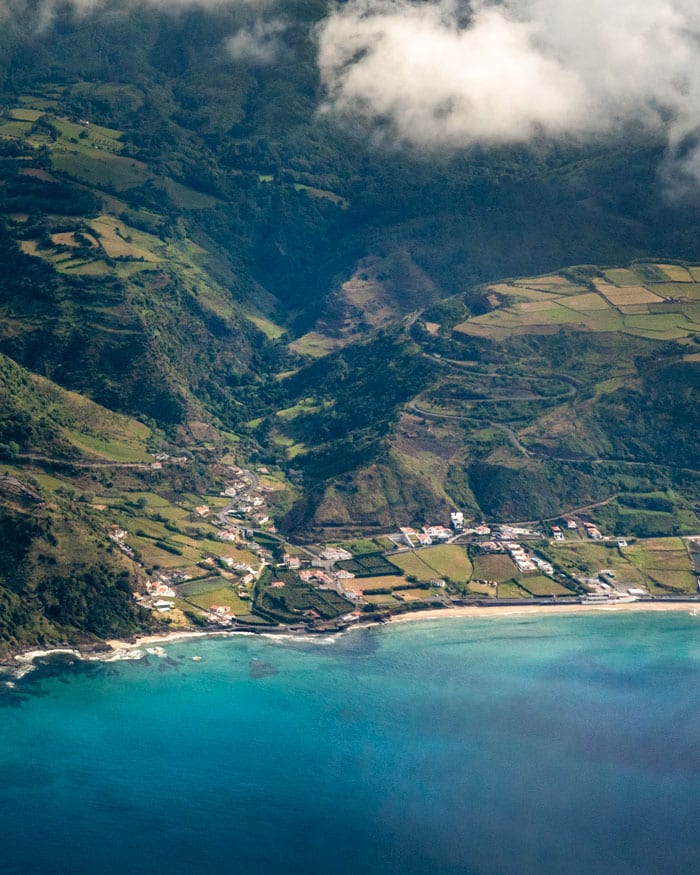
Family-friendly beaches can also be found at the sheltered Praia de Porto Pim on Faial or Praia Grande on Terceira. For something a little different, venture to Praia do Fogo on São Miguel, where, if you bury your feet far enough into the sand, they will be warmed by the hydrothermal vents below.
Sure, these aren’t the typical holiday sands you’d get in Spain’s islands, but that doesn’t make them any less beautiful!
GETTING TO THE AZORES
Many people assume that Ponta Delgada on São Miguel is the only gateway to the Azores. However, TAP Airlines (in conjunction with Azores Airlines) also offers direct flights from the mainland to Terceira, Faial, Pico, Graciosa and Santa Maria, meaning you could start and end your trip on different islands. If you’re travelling from further afield, TAP’s stopover programme, which includes Lisbon and Porto, is worth considering, as it will also give you a 25% discount on all domestic flights.





Leave a Reply
Want to join the discussion?Feel free to contribute!